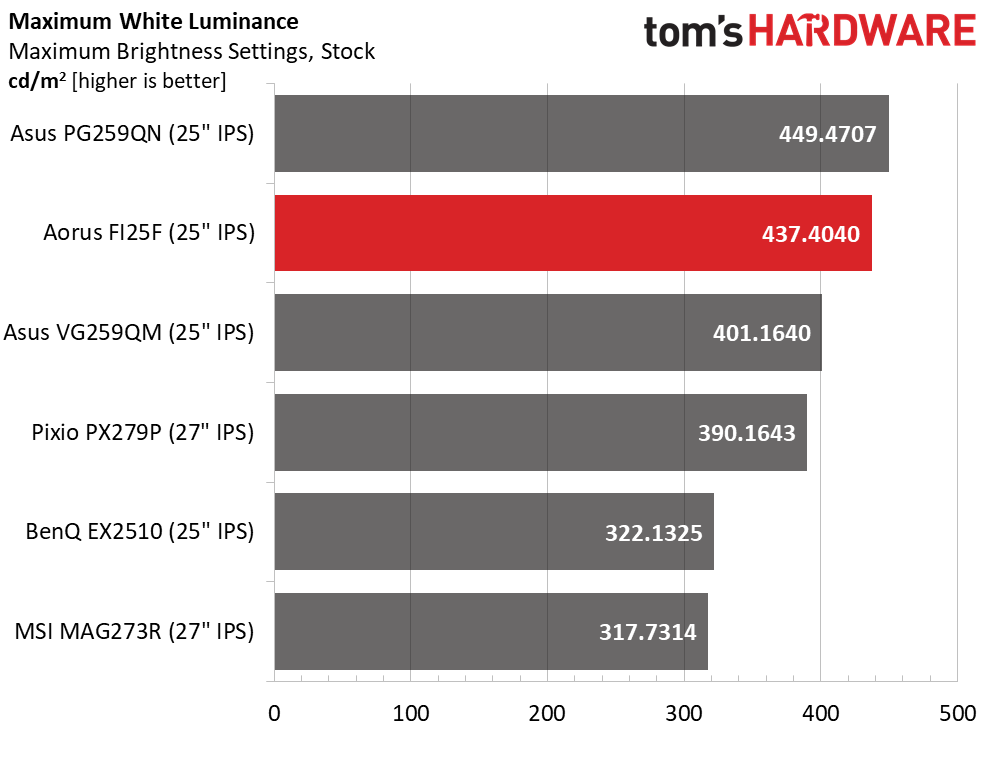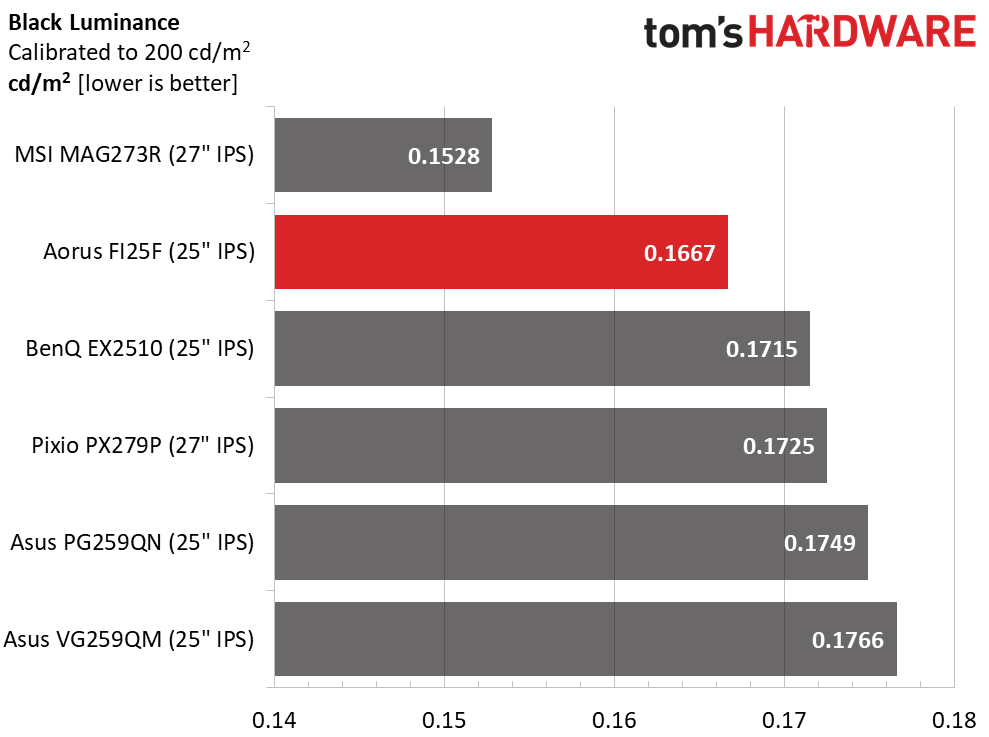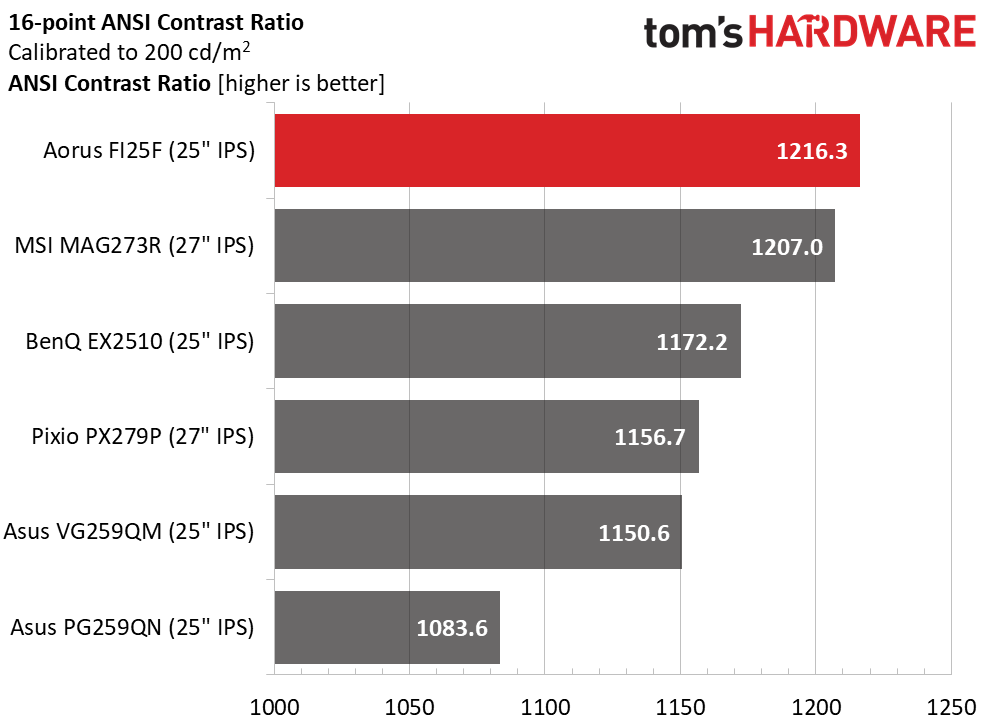Why you can trust Tom's Hardware
To read about our monitor tests in-depth, please check out Display Testing Explained: How We Test PC Monitors. We cover brightness and contrast testing on page two.
Uncalibrated – Maximum Backlight Level
Monitors running at 240 Hz and faster are still a bit rare, but we found a few among our recently reviewed screens. At 360 Hz, we have the Asus ROG Swift PG259QN. The Asus TUF VG259QM runs at 280 Hz. In the 27-inch size, we have the Pixio PX279P at 240 Hz. To round out the group, we’ve included two 144 Hz models: MSI’s MAG273R and BenQ’s EX2510. All include HDR support and sRGB color gamuts, except the MSI, which covers DCI-P3.



If high brightness is a priority, the FI25F steps up with over 437 nits peak in SDR mode. That’s a lot of light, enough to use outdoors if you want. The downside to this is we could only get down to 91 nits minimum. That’s too bright for play in a dark room. But in most office or media room environments, the FI25F’s brightness range is just fine.
The FI25F’s black levels are respectable, resulting in an excellent-for-IPS contrast ratio of 1,238.4:1. You can see a trend here showing that the newest fast IPS panels are delivering better contrast than they did just a year or two ago. Our benchmark is still 1,000:1, but more and more monitors are beating that score.
After Calibration to 200 nits



Our calibration (see page 1) to 200 nits brightness elevated the Aorus FI25F to second place in the black level test. Contrast ratio was still excellent at 1,198.9:1. An extra 100 or 200 points of dynamic range may not sound like much but is a difference you can see, especially in color saturation, which becomes visibly better as contrast rises.
The FI25F scored one of the highest results we’ve ever recorded for an IPS panel in the ANSI test. This is a more real-world test because it demonstrates intra-image contrast, in other words, the contrast seen in actual content. That any IPS monitor can top 1,200:1 in this test shows real progress for the technology.
Get Tom's Hardware's best news and in-depth reviews, straight to your inbox.
Current page: Brightness & Contrast
Prev Page Features and Specifications Next Page Grayscale, Gamma & Color
Christian Eberle is a Contributing Editor for Tom's Hardware US. He's a veteran reviewer of A/V equipment, specializing in monitors. Christian began his obsession with tech when he built his first PC in 1991, a 286 running DOS 3.0 at a blazing 12MHz. In 2006, he undertook training from the Imaging Science Foundation in video calibration and testing and thus started a passion for precise imaging that persists to this day. He is also a professional musician with a degree from the New England Conservatory as a classical bassoonist which he used to good effect as a performer with the West Point Army Band from 1987 to 2013. He enjoys watching movies and listening to high-end audio in his custom-built home theater and can be seen riding trails near his home on a race-ready ICE VTX recumbent trike. Christian enjoys the endless summer in Florida where he lives with his wife and Chihuahua and plays with orchestras around the state.
-
RagedAPE Hello, I purchased thisReply
AROUS 25" FI25F-EK Is it the same monitor as the review? I do not know what the EK is.
Kind regards.
Ape